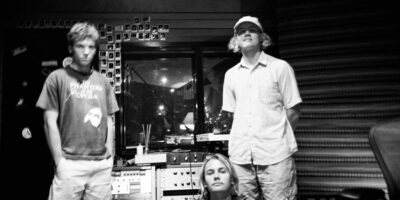Underground Dance and Electronica with Chris Honnery
Marseille-born producer Danton Eeprom is gearing up to release his sophomore album All Dressed Up and Nowhere To Go on the Infine label. Eeprom started out his (musical) life in rock bands, taking an unorthodox route to house and techno as he tried his hand at various sounds and styles. Such eclecticism is apparent throughout Eeprom’s discography, which comprises his vocal contributions on Radio Slave’s 2008 single ‘Grindhouse’, memorable excursions through minimal techno like his 10-minute ‘Confessions Of An English Opium-Eater’ and his quirky output with Ivan Smagghe under the La Horse moniker. While Eeprom runs his own label, Fondation Records, he has not yet used his own stable to release one of his LPs, with both his 2010 debut Yes Is More and his forthcoming album finding their home on Infine. Yes Is More featured collaborations with Chloe and Au Revoir Simone’s Erika Forster, who sings on Eeprom’s cover of Sister Sledge’s disco classic ‘Lost in Music’, a title that doubles as the album’s mantra, reflecting the adventurous musicality that imbues the release. A dapper chap on stage and in his press shots, Eeprom used to perform in a top hat to “fuck around with styles” but has had to find a new look after his beloved hat was purloined by the eccentric folk working at Panorama Bar. “The staff knew that I’d forgotten my hat, but instead of giving it back, they just put it in their office, writing ‘Danton’ and the date that I had left it,” Eeprom informed Resident Advisor. “It’s just on the shelf in the office. When I came back to play again I saw it and said, ‘Hey, that’s my hat!’ They said, ‘Yeah, we know.’ Never asked if I wanted it back. It’s kind of a trophy for them.”
After more than two decades of behind the scenes collaboration, two auteurs of the underground club realm, Juan Atkins and Moritz von Oswald, will release their debut collaborative album Borderland on Tresor Records early next month. The pair’s shared production history dates back more than 20 years to when Atkins was the occasional third member in von Oswald’s 3MB project with Thomas Fehlmann, which released an album on Tresor back in 1992. Borderlandis described in its press release as “eight sequences, seamlessly blending the styles of both techno masters” to create a series of hypnotic jazzy minimal jams. As I listened to a promo of the album while writing this, I can assure listeners that it is a gem that doesn’t disappoint, and definitely one that fans of both producers, along with the likes of Efdemin and Luomo, ought to seek out upon its release.
Never one to sit still, Stefan Goldmann, of German/Bulgarian lineage,has just released a new album, Live At Honen-In Temple, a live recording of Goldmann’s performance in the Japanese city of Kyoto last year, which took place in front of a tiny crowd “while daylight faded into the dark of night”. Those who are familiar with Goldmann’s output should know better than to be surprised at his latest project. Goldmann has accumulated an immensely varied body of work over the years from a limited edition cassette-only release to writing a bi-monthly column for Berlin techno institution Berghain’sflyer-zine. Listeners can expect a decidedly ambient affair on his live album, as Goldmann traverses beatless soundscapes and showcases previously unreleased material, alongside some of his classic cuts like the chorally-influenced ‘Lunatic Fringe’.
Fresh from headlining Mad Racket only a few weeks ago, Ukranian house producer Mikhaylo Vityk, AKA Vakula, will release his new album, You’veNever Been To Konotop (Selected Works 2009-2012)next month on Firecracker Recordings. The album, named after Vityk’s hometown, features twelve unreleased tracks recorded over the last four years, and will be Vityk’s first album under the moniker of Vakula, though he has released LPs under the pseudonyms of V and Vedomir. You’veNever Been To Konotop (Selected Works 2009-2012)is apparently an eclectic and densely woven release, combining “elements of Ukrainian folk melodies, esoteric cryptic rhythm patterns, field recordings, interludes and overgrown organic effects.”
































